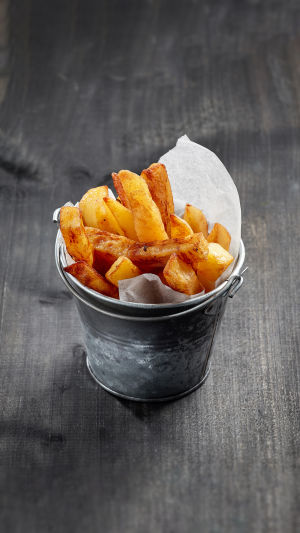When we savor those crunchy and delicious French fries, few may think about the hidden scientific principles behind them.
However, the delectability of French fries is not merely a coincidence but deeply rooted in the principles of food science. Let's explore the scientific mysteries behind the perfect French fries.
<b>1. Ingredients:</b> High-quality French fries must be made from fresh potatoes. Potatoes are rich in starch, which undergoes a series of complex changes at high temperatures, directly affecting the texture and color of the fries. Additionally, selected potatoes should have moderate starch content and moisture to ensure the fries are both crispy and tender.
<b>2. Cutting Technique:</b> Scientists have proven that the shape and size of potato cuts affect the texture of French fries. Typically, fries should be cut into rectangular shapes to expose the starch fully to frying heat, resulting in crispier fries. The size of the cuts should also be controlled within a certain range; too thin can lead to overly fragile fries, while too thick may result in undercooking inside.
<b>3. The frying process:</b> The Frying Process: Frying is aptly described as 'an extremely violent cooking method. Upon contact with hot oil, the moisture on the surface of the fries or other food items vaporizes instantly, creating a volcanic eruption-like airflow, leading to oil splattering. The surface of the fries becomes crispy due to dehydration. Meanwhile, the temperature inside the fries rises sharply.
Any moisture not evaporated from the surface becomes trapped inside, steaming the potatoes to achieve a fluffy texture that contrasts with the crispy exterior. This vaporization process causes many foods, including onion rings, fish, and corn dogs, to crack during frying. It's imperative to form a crispy exterior quickly; otherwise, steam escapes, softening the exterior and making the interior hard and dry. Simultaneously, the hot oil penetrates, resulting in a heavy, greasy texture.
Most foods cannot quickly form a crispy exterior, but coating them with a layer of starch can achieve this purpose. Moreover, the more starch molecules are interconnected (a process known as "cross-linking"), the more moisture is expelled, resulting in a crispier exterior. Additionally, starch may undergo some chemical reactions (Maillard reaction and caramelization), leading to browning and the formation of caramel—a key to the subtle sweetness in delicious fried foods.
The cooking temperature for French fries is crucial, ideally between 180 to 190 degrees Celsius. Within this temperature range, oil can rapidly conduct heat, ensuring the fries develop a crispy golden shell on the outside while being thoroughly cooked and tender inside.
The timing of frying French fries also requires precise control. Generally, the cooking time for French fries ranges from 3 to 5 minutes.
In conclusion, behind perfect French fries lies a wealth of food science principles. From ingredient selection to cooking techniques, each step is meticulously designed and scientifically validated to fry up perfect fries with a crispy texture and golden color.





